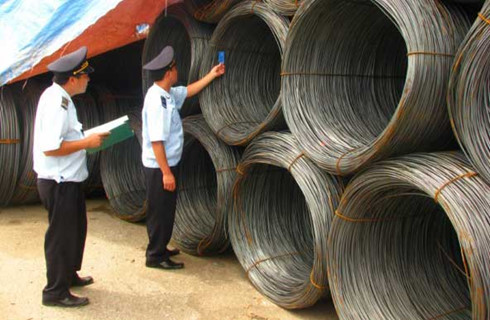VSA calls for urgent action on steel overcapacity
The Vietnam Steel Association (VSA) has called for urgent action by the government to address the steel industry crisis resulting from overcapacity and ensure that it remains strong and globally competitive.

Over the past decade Vietnamese steelmakers have been on record as the second largest producer of steel in Asia behind China, with an average output of more than 30 million metric tons of product per year.
China is also the largest steel exporter worldwide with the Chinese steel industry accounting for almost half of the global demand for steel production over the past 10 years.
The VSA argues that steel is vitally important not only in its own right, but because it is critical to other industrial value chains and closely linked to the health of many downstream industrial segments such as automotive, construction, electronics, mechanical and electrical engineering.
Today, the Vietnam steel industry finds itself in a very difficult situation, says the VSA, largely as a result of overcapacity, operating at just 50-60% capacity and reeling from huge economic losses.
The steel industry must cope with the simultaneous effects of low demand resulting from overcapacity in a globalized steel market whilst at the same time being confronted with the need to invest heavily to adjust to the green economy and produce more innovative products.
“Aggravating the problem,” said a rep from Phu My Steel Company, “is the fact that local steelmakers simply don’t have the financial ability to invest in anything but small scale production lines utilizing out-of-date technologies.”
“In addition, the technological qualifications of personnel in the industry are weak and thus inhibit sorely needed innovation and competitiveness.”
Nor can we compete with China on price, adds a rep from another domestic manufacturer in the industry. Chinese steelmakers have a tremendous advantage, benefiting from economies of scale, which spread their fixed production costs over significantly larger quantities of product.
Worldwide, steel demand is dependent on the economic and financial status of a few key steel using industries. For example, the construction and the automotive industries globally account for a combined share of approximately 40% of steel demand.
In Vietnam there is no automotive industry to speak of and the construction and electronic equipment industries are the key important drivers for the prosperity of the steel industry.
To respond to the crisis in steel VSA has urged the government to set out targeted actions to ensure that the operating environment is conducive to a competitive and sustainable steel industry.
This will enable it to solve the structural problems it faces, elevate its global competitiveness and focus on developing the next-generation of steel products that are essential for steel and other key downstream industries.
Currently, there is so much overcapacity the Vietnam government should stop issuing investment licences to any foreign investors and thwart any further delocalization of the industry, says the VSA.
In addition, the regulatory framework should be redesigned in a smart and ambitious way so as to be a primary driver for innovation and most importantly include stricter environmental targets.
Public procurement should also be the centrepiece for bolstering both innovation and demand for steel in the industry.
The VSA says that if the nation’s steelmaking capacity remains constant after 2015, it could take five to seven years for demand to match capacity, if demand continues to incrementally climb at current rates of growth.
During this time, it’s important for industry in concert with governmental action to implement initiatives to support the construction and electronic segments of the economy with a view to increasing their sustainability, resource and energy efficiency.
This in turn will stimulate further growth-oriented measures, boosting the consumption of steel.
The most modern installations in the Vietnam steel industry are close to the limits of what current technologies can do, and it will struggle to achieve further significant advances without the introduction of breakthrough technologies.
New technological innovations are in the offing but still several years away.
In the meantime, the application of safeguard measures must be considered as a temporary solution, says the VSA.
However, in the long-run, domestic steelmakers must find ways to apply more modern technologies, innovate and produce higher quality product at reasonable prices if the industry is to become sustainable.
VOV
 Synchronous planning to promote sustainable development
Synchronous planning to promote sustainable development
 International Exhibition on Smart Furniture Solutions (SFS VIETNAM 2024): Greening the wood export industry
International Exhibition on Smart Furniture Solutions (SFS VIETNAM 2024): Greening the wood export industry
 Criteria of 2024 projected to early accomplishment
Criteria of 2024 projected to early accomplishment
 Import-export turnover reaches nearly US$53 billion
Import-export turnover reaches nearly US$53 billion
 Binh Duong vibrant with e-commerce week and super promotional month
Binh Duong vibrant with e-commerce week and super promotional month
 Training workshop on restructuring of industry and trade successfully organized
Training workshop on restructuring of industry and trade successfully organized
 Bank encourages checking transactions on applications
Bank encourages checking transactions on applications
 Ben Cat concentrates efforts to fulfill socio-economic development targets
Ben Cat concentrates efforts to fulfill socio-economic development targets
 Forstering a logistics center with regional connection
Forstering a logistics center with regional connection
 To clear bottlenecks, make good use of FTAs
To clear bottlenecks, make good use of FTAs







